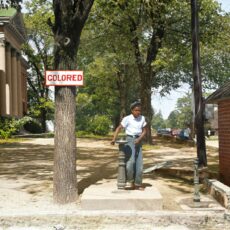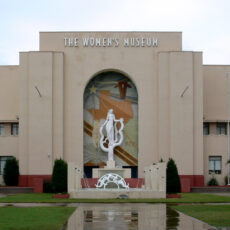
Dallas, Texas, is a city known for its rich cultural heritage, booming economy, and iconic skyline. However, behind the bustling modern metropolis lies a fascinating story of how this city was founded. From its humble beginnings as a small settlement on the Trinity River to its rise as a major urban center, Dallas’ early history is filled with rare insights and hidden pathways that shaped its development. Let’s take a journey back in time to explore the lesser-known aspects of Dallas’ founding and the key figures who played crucial roles in its early days.
The Birth of Dallas: A Settlement on the Frontier
The story of Dallas begins in the early 1840s, a time when the Republic of Texas was still an independent nation, having won its independence from Mexico just a few years earlier. During this period, Texas was a frontier land, sparsely populated and largely untamed. The area that would become Dallas was no exception, characterized by open prairies, dense forests, and the winding Trinity River.
In 1841, a Tennessee lawyer named John Neely Bryan set out on a journey that would change the course of history. Bryan, like many other pioneers of the time, was drawn to the opportunities offered by the vast, unclaimed lands of Texas. He traveled through the region, searching for a suitable location to establish a trading post. When he reached the banks of the Trinity River, he found the perfect spot. The river provided a natural transportation route, and the surrounding land was fertile, making it ideal for agriculture.
Bryan’s decision to settle here was influenced by the belief that the Republic of Texas government would eventually establish a permanent Indian trading post in the area, which would bring settlers and commerce. With this vision in mind, he built a small cabin on the riverbank in November 1841, marking the unofficial founding of Dallas.
Rare Insights: The Role of the Peters Colony
One of the hidden pathways in the story of Dallas’ founding is the role played by the Peters Colony, a land grant enterprise that had a significant impact on the settlement and development of North Texas. In 1841, the Republic of Texas granted land to the Texas Emigration and Land Company, also known as the Peters Colony, to encourage settlement in the region.
The colony was tasked with recruiting settlers from the United States and Europe, offering them land in exchange for their commitment to live on and develop the property. The Peters Colony brought a diverse group of settlers to the area, including farmers, tradesmen, and professionals, all of whom contributed to the growth of the fledgling settlement of Dallas.
However, the relationship between the settlers and the Peters Colony was not without conflict. Many settlers were dissatisfied with the terms of their land grants, leading to disputes and legal battles. Despite these challenges, the influx of settlers facilitated by the Peters Colony helped Dallas grow from a tiny trading post into a thriving community.
The Mysterious Origin of the Name “Dallas”
Another hidden gem in the history of Dallas is the mystery surrounding the origin of its name. While John Neely Bryan is credited with founding the city, the reason he chose the name “Dallas” remains unclear. Historians have speculated about the possible origins of the name for decades, but no definitive answer has been found.
One popular theory suggests that the city was named after George Mifflin Dallas, the 11th Vice President of the United States under President James K. Polk. This theory is plausible, given that Bryan was a lawyer and likely had an interest in national politics. Another theory posits that the city was named after Dallas, Scotland, or a town named Dallas in Moray, Scotland. Some even suggest that the name could have been derived from a friend or relative of Bryan, though no concrete evidence supports this idea.
The true origin of the name “Dallas” may never be known, but this mystery adds an intriguing layer to the city’s history, reminding us that even well-documented stories can hold secrets.
Dallas in the Republic of Texas: A Strategic Location
The strategic location of Dallas played a significant role in its early growth and development. Situated near the Trinity River, the settlement was ideally positioned to serve as a transportation and trade hub. The river was a major thoroughfare for goods and people, connecting the region to other parts of Texas and beyond.
In 1845, the Republic of Texas was annexed by the United States, and Texas became the 28th state in the Union. This event marked a turning point for Dallas, as the city began to grow rapidly with the influx of settlers and the expansion of trade routes. The arrival of new residents brought diverse skills and professions, further fueling the city’s growth.
Hidden Pathways: The Arrival of the Railroads
One of the most significant hidden pathways in the story of Dallas’ rise is the arrival of the railroads. In the late 19th century, the United States was experiencing a period of rapid industrialization, and the expansion of the railroad network was a key driver of economic growth.
Dallas was strategically positioned to benefit from this expansion. In 1872, the Houston and Texas Central Railway reached the city, followed by the Texas and Pacific Railway in 1873. These railroads transformed Dallas into a major transportation hub, connecting it to markets across the state and the country. The railroads also attracted new businesses and industries, contributing to the city’s economic prosperity.
The impact of the railroads on Dallas cannot be overstated. They not only facilitated the movement of goods and people but also spurred urban development, leading to the construction of new buildings, roads, and infrastructure. By the late 19th century, Dallas had evolved from a small frontier settlement into a bustling city with a growing population and a thriving economy.
Key Figures in Dallas’ Early History
While John Neely Bryan is often credited as the founder of Dallas, the city’s early growth and success were the result of contributions from many other key figures. Among them was Alexander and Sarah Horton Cockrell, a married couple who played a pivotal role in the city’s development during the 1850s. The Cockrells purchased Bryan’s land in 1852 and expanded the settlement by building a ferry across the Trinity River, a gristmill, and a sawmill. These developments attracted more settlers and established Dallas as a center of commerce.
Another influential figure was J. Erik Jonsson, who, although active in a later period, helped shape modern Dallas through his leadership and vision. Jonsson, co-founder of Texas Instruments, served as mayor of Dallas from 1964 to 1971 and was instrumental in the city’s post-war economic boom. His efforts to improve infrastructure, education, and public services laid the foundation for Dallas’ emergence as a leading global city.
Conclusion: The Legacy of Dallas’ Founding
The founding of Dallas is a story of vision, determination, and strategic foresight. From John Neely Bryan’s initial settlement on the banks of the Trinity River to the arrival of the railroads and the contributions of key figures, Dallas’ early history is rich with rare insights and hidden pathways. These stories remind us that the city’s success was not a foregone conclusion but the result of countless decisions, both big and small, that together created the Dallas we know today.
As we reflect on the legacy of Dallas’ founding, it’s clear that the city’s history is more than just a collection of dates and events. It’s a testament to the enduring spirit of innovation and resilience that continues to define Dallas and its people. Whether you’re a resident or a visitor, understanding the history of Dallas provides a deeper appreciation for the vibrant, dynamic city it has become.
















